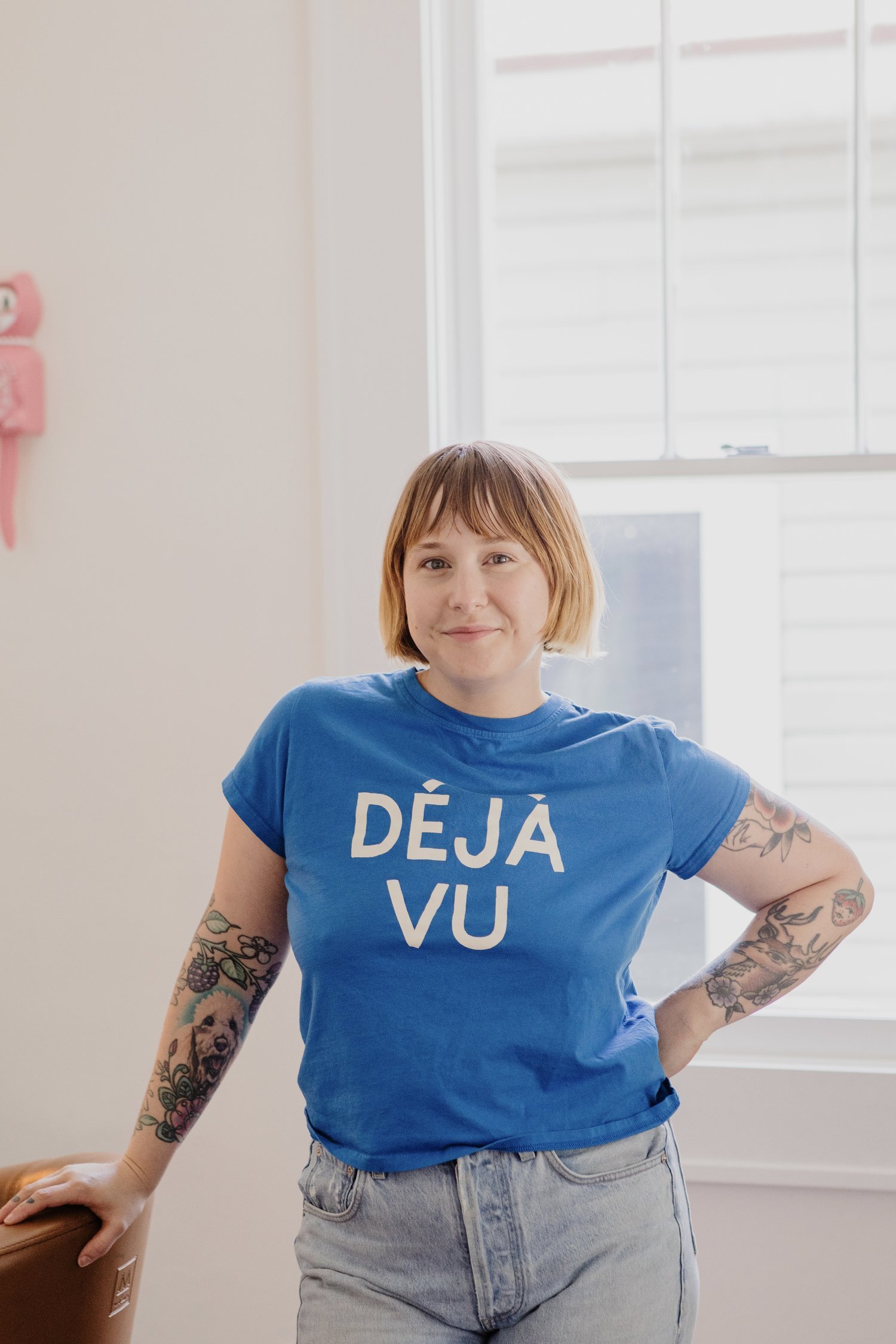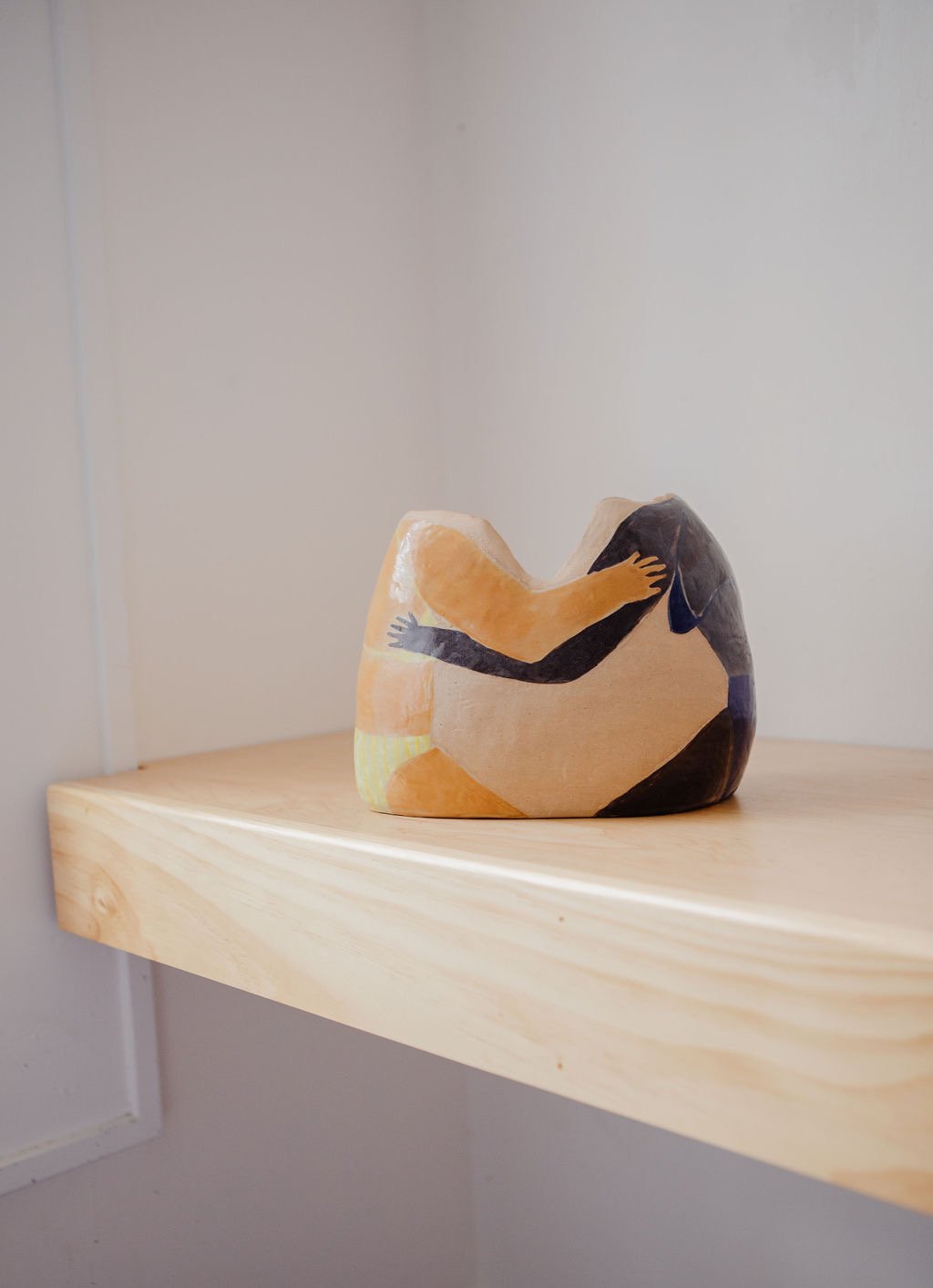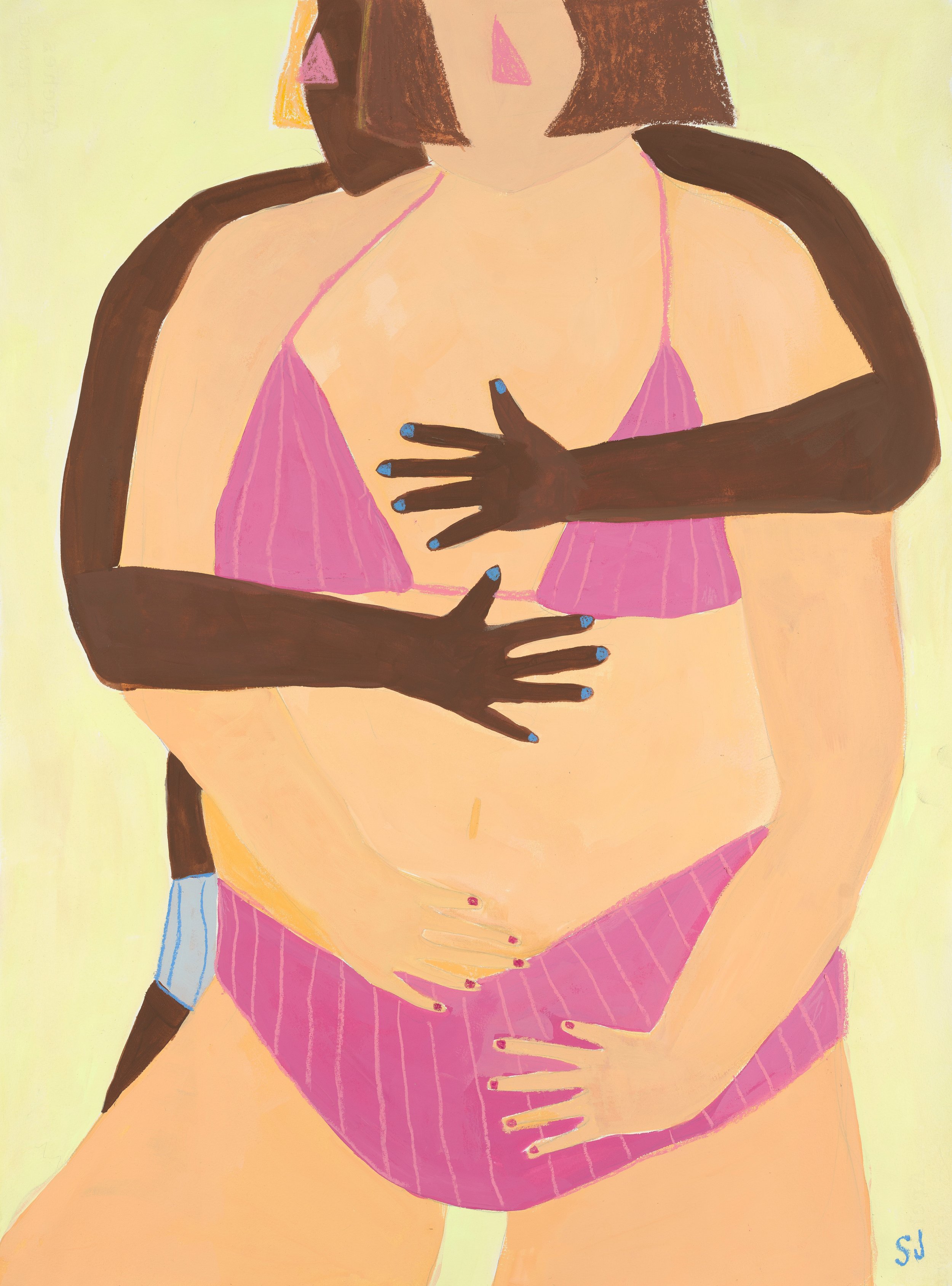SAVANNAH STRICKROTH
HANDLE WITH CARE- SPOTLIGHT
Having the privilege to watch an artist grow and develop through their career is such a, for lack of a better word, really cool thing to be able to experience. Whether it’s her earlier 2D work or her newer ceramic practice, her style and message has been consistently so true to herself (you always know a Savannah Strickroth piece when you see it).
With relatively flat planes of color and shape, she almost extends an invitation for you to see yourself in the piece- for you to relate with the characters she’s created in an unsuspectingly thoughtful way. The bright and cozy color palette and jaunty forms catch your attention but the sneaky emotions they conjure make you stay.
And with that, here we are in conversation with Savannah.
PW: Do you like to start with an idea or a sketch to create your ceramic works? Or do you like to just start with raw clay and see where it goes?
ss:
It’s really a bit of both. As I spend more time with the medium, I’ve realized that pre planning tends to keep things more structured—and I usually end up liking those pieces more once they come out of the final firing. The wall-hanging pieces, in particular, have to be completely planned out since they’re so prone to breaking and warping.
For the larger sculptural forms, I’ve found that having rough sketches gives me a general guideline while still leaving room for a more exploratory approach in the final design. As someone who doesn’t naturally enjoy pre-planning, I’m learning to lean into it. I think it’s good for me—especially since I can be pretty scatter-brained.
PW: Your ceramic work is so fun and illustrative, what is the origin of these characters and forms that inspire how you finish your ceramic works? Also the colors! You're so good at it, how do you decide on colors?
ss:
I’m inspired by Studio Ghibli and artists like Madeline Donahue. I’ve found that creating characters allows me to explore topics like grief and motherhood in a more playful, approachable way. One of my earliest memories is being a first grader and hating the black shoes we had to wear to school — that feeling of restriction or being control stayed with me through years of uniforms that always felt constrictive.
Eventually, I realized that to feel more like myself, I needed to fully embrace my love of color. You can see it in my clothing, in my home, and in my work. This ties back to the idea of approaching difficult conversations through these characters I’ve created by using playful colors and forms. I often think about color really simply: would I wear this? How does it show up in my everyday life? I think that approach helps make the work feel more relatable and consistent in my work.
PW: You've also been a painter for a while now, how does it feel transitioning back and forth from painting on a canvas to painting on clay?
ss:
Traditional canvas or paper feels a little foreign to me since lately I spend most days in my ceramic studio at Studio Union. I will never say never, but finding the ability to translate my illustrations onto clay, makes me want to refine that craft instead of focusing on traditional methods like paint on canvas. But the nice thing is it’s always there.
PW: How did you get into ceramics, and what do you love about your practice now that you have clay in your toolbox of mediums that you work with?
ss:
I was really lucky to find clay as a teenager when I had an incredible teacher, Tim Holsinger, who pushed me to work in large scale. When everyone was wheel throwing, I was the one kid hand building a large bust in the back. I was always obsessed with the female form. But it wasn’t until 4 years ago, when I was reintroduced to clay by taking a class with Sonny Sisan & Cristina Victor, it reignited my love for the tactile nature of clay. I think I had fallen out of love with painting, and that class changed the trajectory of my art career.
What I love now about my practice is that I show up everyday, which means I practice every day. After the death of my brother and the birth of my son, I learned how precious time is. So every second I have to dedicate to my ceramic practice, I do. With this seriousness, I feel like I am expanding what I thought possible, and am enjoying what I am creating.
PW: We love how your work is so expressive, is there a story that inspires how you create the figures you paint or sculpt?
ss:
I grew up in a fairly religious background. The churches and schools I was in taught that women were less than men. I have spent the rest of my life exploring and healing this core belief. I am a queer woman, I’ve spent most of my life feeling bad about my body, my sexuality, and my mind. So I have felt the need to dive head first into self acceptance through my work. Often my work depicts women and the experiences we go through. This includes things like the loss of our family, our collective body struggles, the birth of our children, and so much more.
When I was pregnant with my son, I remember weeping when Roe V. Wade was overturned, I was heartbroken for all of us, feeling as if we will never get ahead. You’ll often see the women in my work holding each other. We are surrounded by our grief, but we still smile, laugh, and play. We are all connected and support each other. My hope is that other women can see their own experiences through my work, and that we will all get through this together.
interested in seeing more of savannah’s work?
A collection of new ceramic works will be on view from April 18th-April 20th.
Friday April 18th 6p-10p
Saturday April 19th 10a-4p
Sunday April 20th 3p-6p
OPENING RECEPTION:
VIEWING HOURS:
All photos by Lydia Hadley






